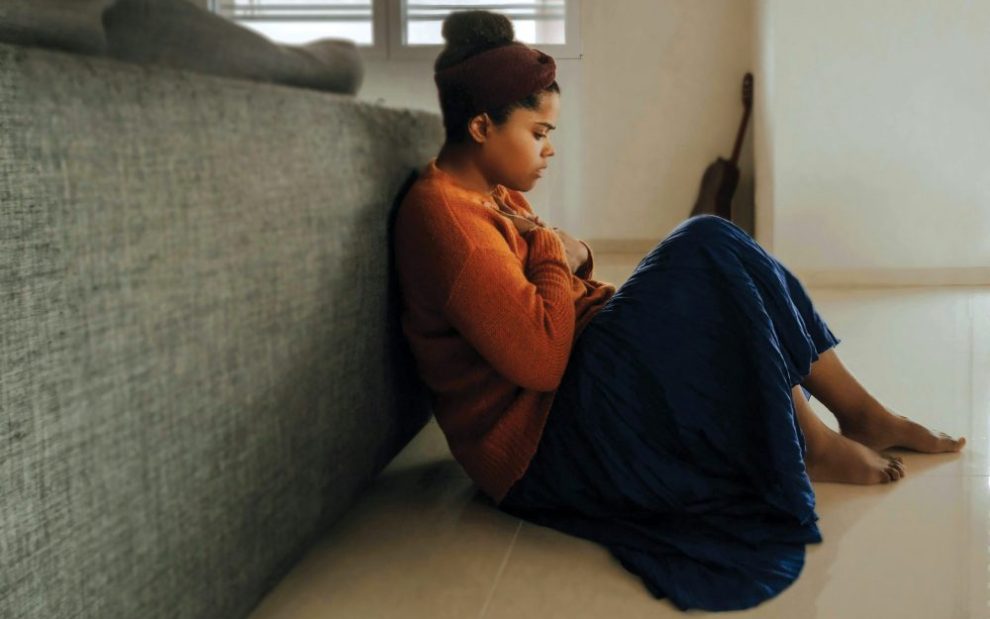I was sitting on my bed in a moment of mental health crisis when I got a call from my friend Emily. (I changed her name for the purposes of anonymity.) I was grateful to get her call and shared candidly about the distress and dysregulation I was feeling. Emily asked if she could pray for me, and I said yes: I thought maybe prayer would calm me down, center me, remind me of my values and community, and help me connect to myself again.
But Emily had a different agenda for her prayer. Instead of praying for peace, calm, or support, she prayed for my “madness” to be cured “in the name of Jesus.” She prayed that I would be healed “without a change of medicine or therapy, since they are obviously not working.”
I didn’t know what to say—it wasn’t the prayer I expected, and it was far from the prayer I needed. We hung up a few minutes later, and I felt more alone than ever.
If Emily had asked me, I could have told her that I neither needed nor expected a “cure.” What’s more, the distress I continued to experience in the following weeks and months proved that I would not receive such a cure even if I had wanted one. Emily’s prayer and my subsequent cure-lessness put me, Emily, and God in an awkward interpersonal triangle: Either Emily’s prayer was not good enough to work, my madness was too sinful for even God to fix, or God was not powerful enough to set things right. In other words, my persistent and disabling madness must evidence either a powerless God, an insufficient faith, or a soul beyond repair.
As I have gotten older and connected with other disabled people, I have learned that my experience is far from unique. Disabled activist Imani Barbarin speaks of how frequently she is prayed over in public by strangers. She writes on X (formerly Twitter) that she once experienced nonconsensual prayers for a cure from 12 strangers in one day. On her website, Crutches and Spice, Barbarin writes about another occasion when, immediately after presenting at a conference about her painful experiences with repeated and unsolicited prayers for a cure, multiple conference attendees came forward to pray for her to be cured—doing the exact thing she had just warned them against.
Disabled people experience this all the time. In Bethany McKinney Fox’s book Disability and the Way of Jesus (IVP Academic), the Rev. Matthew Arguin, a Christian minister with cerebral palsy, describes his experience with a stranger in a mall who accosted him with an aggressive line of questioning, implying that sufficient belief in Jesus would cure Arguin’s need for a wheelchair. In an article for the Journal of Religion, Disability, and Health, Darla Schumm, a blind woman, writes about an airline employee who tells her that just as Jesus heals all sins, he will heal her blindness if she just prays hard enough.
As I share these anecdotes, it is important to remember that disability does not exist in a vacuum. Disabled folks embody a range of additional identities and cultures that influence how they are treated and how they experience the world. I, a white, cisgender, queer woman with an invisible disability, have a vastly different disability experience than Barbarin, who is a Black woman with a visible disability that limits her mobility. For this reason, I strive continually to be a student of the disability justice movement, which attends deeply to these intersections.
The disability justice movement had its formal beginnings around 2005, when disability activists—especially activists who are LGBTQ+, Black, Indigenous, or people of color—began to imagine a “second wave” of the disability rights movement, which they saw as limited by its whiteness and heteronormativity. Instead, these activists argued, the disability justice movement always has been and always must be led by disabled people of color and by queer and gender nonconforming disabled people.
In response, the disability justice movement asserts the following, according to Skin, Tooth, and Bone: The Basis of Our Movement Is Our People (Sins Invalid):
All bodies are unique and essential; all bodies have strengths and needs that must be met; we are powerful, not despite the complexities of our bodies, but because of them; and all bodies are confined by ability, race, gender, sexuality, class, nation state, religion, and more, and we cannot separate them.
However, while the disability justice movement embraces the gifts of disability and diversity, the Christian insistence on cure uncritically associates disability with sin, badness, and contrariness to God’s will. Many Christians who insist on praying for a cure claim the Bible as justification for their actions: After all, many of Jesus’ reported miracles were “cures.” According to Fox, the New Testament refers to cure more than any other Second Temple text, and even nonreligious accounts of Jesus portray him as a miraculous healer. Many Christians have interpreted Jesus’ miraculous cures as invitations to attempt miraculous cures of their own, such as by praying over disabled people like me, Barbarin, or Arguin, especially since many of Jesus’ healing miracles were (allegedly) confirmed or made possible by the faith of the individual being cured (think, for example, of the stories in Mark 5:34, Mark 9:23, Luke 17:19, and Matt. 9:20–22).
For many disabled people, this interpretation feels one-sided, especially because many disabled people are not interested in a cure. Instead, they understand their disabilities as integral to their unique personhood. Even while disabled people may seek treatment for their impairments—for example, taking medication, participating in rehabilitative therapy, or accepting a prosthetic—many do not wish their disability entirely away.
I, and many of my disabled kin, ascribe to the social model of disability. This model locates the primary “problem” of disability in ableist social attitudes and built environments. (Ableism refers to the systemic and interpersonal discrimination against disabled people in our world today.) According to the social model of disability, the “problem” with being blind is not the lack of sight, but rather the lack of braille resources. Similarly, the “problem” with using a wheelchair is not the lack of mobility, but rather the lack of elevators, ramps, and other physical accommodations.
Many disabled people find pride in their disability identity, experience, culture, and community. In her book Care Work: Dreaming Disability Justice(Arsenal Pulp Press), disability movement leader Leah Lakshmi Piepzna-Samarasinha writes at length about “crip skills,” “crip science,” and “crip emotional intelligence.” These are insights and abilities unique to disabled people, birthed from the ways disabled people both choose and are forced to navigate society. (Crip is a term reclaimed by the disability community used by disabled folks to refer to themselves. Previously, the word—short for cripple—was used as a slur.) In an article for Hypatia, Susan Wendell points out that even disabled people who do desire a cure—especially people with chronic pain or chronic illness—often view a medical, personal cure “not as a substitute for curing ableism but an addition to it.”
Insistence on cure can also be a form of erasure. Piepzna-Samarasinha writes that in an ableist society the “only good crip is a cured crip, one who has ceased to exist. Cure is healing is elimination.” This notion is also common in Christian eschatology: Biblical scholar Candida R. Moss discusses the early church’s belief in the perfected heavenly body, which was abled, “healed,” and “complete”—along with being pale and white—resulting in the “systematic removal of disability [and Blackness] from the Kingdom of God.” Likewise, Barbarin shares that she internalized “cure” narratives after a life of people telling her she would be cured in heaven.
This Christian exclusion of disabled and raced bodies in heaven is inseparable from the aforementioned association of disability with sin. An abled-only afterlife is the logical endpoint of the Christian obsession with cure: Disabled people with disabled bodies disappear not only from Earth but also from heaven.
At its core, the “cure agenda” elevates individual change (cure) over societal change (justice). It forces an oft-unwanted alteration on the body-minds of disabled individuals without accepting the increased diversity, creativity, and possibility that they bring to the world. Thus, Christian theologies that solely require cure in individual, disabled body-minds are insufficient at best, disregarding the extensive transformation needed for our ableist, disabling society.
As Christians, I know that we can and must do better by disabled people and their communities. I believe that we are capable of learning and growing to be inclusive spiritual homes with holistic, liberating theologies, continuing the legacy and following the leadership of our disabled ancestors and kin. In the words of Patty Berne, “There has always been resistance to all forms of oppression, as we know in our bones that there have also always been disabled people visioning a world where we flourish, a world that values and celebrates us in all our beauty.” May it be so in our churches, in our webs of connection, and in ourselves.
This article also appears in the August 2024 issue of U.S. Catholic (Vol. 89, No. 8, pages 16-18). Click here to subscribe to the magazine.
Image: Unsplash/Joice Kelly












Add comment